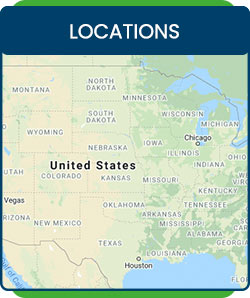Narcolepsy Signs and Symptoms Q&A
If you are having symptoms of narcolepsy and are looking for more information call us at one of our clinics or request an appointment online. We have convenient locations across the U.S. in Bloomington IL, Peoria/Dunlap IL, El Paso TX and Wausau WI.


Table of Contents:
What is the primary symptom of narcolepsy?
How is type 1 narcolepsy diagnosed?
What can trigger narcolepsy?
What happens if narcolepsy goes untreated?
Narcolepsy is a chronic sleep disorder characterized by excessive daytime sleepiness and sudden lapses of sleep, which is known as microsleep. While there are many common sleep disorders that affect tens of millions of people, it is estimated that narcolepsy affects around 150 to 200,000 people in the US. There are many symptoms of narcolepsy, although not everyone with the condition will experience all of the symptoms, which include daytime sleepiness, sleep paralysis, cataplexy (loss of muscle strength) and even hallucinations. Although narcolepsy is a relatively rare condition, there are several treatment methods that can help ameliorate symptoms and improve quality of life.
The primary symptom of narcolepsy is excessive daytime sleepiness, or EDS. This can cause people with the condition to fall asleep without warning, in any place, at any time. It may also result in decreased alertness and focus throughout the day, which can have other effects on mental and physical health. EDS is also the first symptom to usually appear and can be very troublesome, making it difficult to concentrate and to properly function.
In addition, narcolepsy may also cause:
– Sudden loss of muscle strength (cataplexy)
– Sleep paralysis
– Changes in rapid eye movement (REM) sleep
– Hallucinations
Because other conditions can mimic its symptoms, in many cases narcolepsy can be difficult to diagnose. Sleep deprivation can cause excessive daytime sleepiness (EDS), and as many as a thirds of Americans do not get enough sleep. A wide range of sleep disorders can cause EDS, such as sleep apnea and insomnia.
To diagnose narcolepsy, doctors often use two tests, polysomnography (PSG) and the multiple sleep latency test (MSLT). PSG is usually conducted overnight in a sleep clinic and tracks a person’s breathing, muscle movement, and brain activity. MSLT, on the other hand, is normally conducted in the morning immediately following a PSG. This test measures how quickly a person is able to fall asleep, and how quickly they can enter REM sleep.
There are several things that can trigger narcolepsy, although the most common ones include:
– An Autoimmune Disease
– Chemical Imbalance
– Brain Injury
– Certain Infections
In most cases, narcolepsy is not an inherently dangerous condition. It can, however, develop into serious complications if left untreated, including:
– Increased Risk of Accidents — Because people with narcolepsy have difficulty maintaining concentration for a long period of time, the risk of accidents is higher.
– Reduced Mental Functioning — The negative effects that narcolepsy has on focus, memory, and concentration leads to temporary cognitive decline.
– The Strain on Emotional and Social Relationships — It can be hard for people with narcolepsy to have an emotionally stimulating social life, with such triggers as anger and surprise resulting in cataplexy.
– Weight Gain — In cases of improperly managed narcolepsy, the condition can result in weight gain and obesity, although the specific reasons for this are unknown.
– Depression — Patients can feel depressed due to the fact that symptoms of narcolepsy make a person inactive and socially isolated.
– Poor Job Performance — Narcoleptic patients commonly report their condition negatively affecting job performance, with approximately 59% of patients losing their jobs due to excessive daytime sleepiness.
– Difficulty In Acquiring a Driver’s License — In cases of unmanaged narcolepsy, it may be difficult to acquire a driver’s license.
If you are experiencing the signs and symptoms of narcolepsy, come to Koala® Center For Sleep & TMJ Disorders for treatment today. To provide care for as many people as possible, Koala® Center For Sleep & TMJ Disorders has convenient locations near you in Bloomington, IL; Peoria – Dunlop, IL; Wausau, WI; and El Paso, TX. To find out which Koala® Center For Sleep & TMJ Disorders is closest to you, visit our Locations page! We look forward to serving you!

Additional Services You May Need
▸ KoalaKIDZzz®
▸ Sleep Apnea
▸ Snoring
▸ TMJ Disorder
▸ Fatigue
▸ Sleep Disorders
▸ Weight Loss
▸ CPAP Alternative
▸ Oral Appliances




